9· -/1 points SerCP11 16.2·P.014 My Notes Ask Your Teacher Three charges are situated at corners of a rectangle as in the figure below. How much energy would be expended in moving the 8.0 μC charge to infinity? 8.0 HC 6.0 cm 8.0 cm 4.0 uC Need Help? ReadIt
9· -/1 points SerCP11 16.2·P.014 My Notes Ask Your Teacher Three charges are situated at corners of a rectangle as in the figure below. How much energy would be expended in moving the 8.0 μC charge to infinity? 8.0 HC 6.0 cm 8.0 cm 4.0 uC Need Help? ReadIt
College Physics
11th Edition
ISBN:9781305952300
Author:Raymond A. Serway, Chris Vuille
Publisher:Raymond A. Serway, Chris Vuille
Chapter1: Units, Trigonometry. And Vectors
Section: Chapter Questions
Problem 1CQ: Estimate the order of magnitude of the length, in meters, of each of the following; (a) a mouse, (b)...
Related questions
Question
100%

Transcribed Image Text:9·
-/1 points
SerCP11 16.2·P.014
My Notes Ask Your Teacher
Three charges are situated at corners of a rectangle as in the figure below. How much energy would be expended in moving the 8.0 μC charge to infinity?
8.0 HC
6.0 cm
8.0 cm
4.0 uC
Need Help? ReadIt
Expert Solution
This question has been solved!
Explore an expertly crafted, step-by-step solution for a thorough understanding of key concepts.
This is a popular solution!
Trending now
This is a popular solution!
Step by step
Solved in 4 steps with 3 images

Recommended textbooks for you
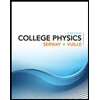
College Physics
Physics
ISBN:
9781305952300
Author:
Raymond A. Serway, Chris Vuille
Publisher:
Cengage Learning
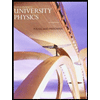
University Physics (14th Edition)
Physics
ISBN:
9780133969290
Author:
Hugh D. Young, Roger A. Freedman
Publisher:
PEARSON
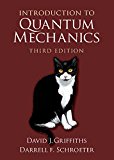
Introduction To Quantum Mechanics
Physics
ISBN:
9781107189638
Author:
Griffiths, David J., Schroeter, Darrell F.
Publisher:
Cambridge University Press

College Physics
Physics
ISBN:
9781305952300
Author:
Raymond A. Serway, Chris Vuille
Publisher:
Cengage Learning

University Physics (14th Edition)
Physics
ISBN:
9780133969290
Author:
Hugh D. Young, Roger A. Freedman
Publisher:
PEARSON

Introduction To Quantum Mechanics
Physics
ISBN:
9781107189638
Author:
Griffiths, David J., Schroeter, Darrell F.
Publisher:
Cambridge University Press
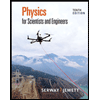
Physics for Scientists and Engineers
Physics
ISBN:
9781337553278
Author:
Raymond A. Serway, John W. Jewett
Publisher:
Cengage Learning
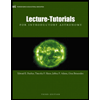
Lecture- Tutorials for Introductory Astronomy
Physics
ISBN:
9780321820464
Author:
Edward E. Prather, Tim P. Slater, Jeff P. Adams, Gina Brissenden
Publisher:
Addison-Wesley
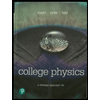
College Physics: A Strategic Approach (4th Editio…
Physics
ISBN:
9780134609034
Author:
Randall D. Knight (Professor Emeritus), Brian Jones, Stuart Field
Publisher:
PEARSON